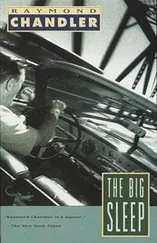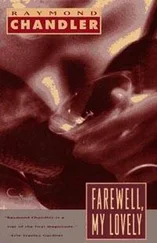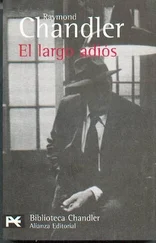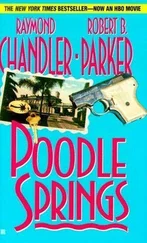The book that emerged— Doing Criticism: Across Literary and Screen Arts —thus keeps faith with the original objectives of How to Do Criticism , which had included advice not only about how to engage productively with a critical object—a poem, or a novel, or a film—but also how to sustain analysis in argument, how to reach judgments, and how to support them. Over time, however, it became a book not only about the hows of criticism, but also about the whys and wherefores , the whats , the whens , and even the whethers . It came to concern itself, that is, with criticism’s reasons and motives, its objects, occasions, and sustaining conditions. Such questions are addressed most directly in Part 1, but they are also elaborated in the introductory sections to the four chapters in Part 2, where a range of specific categories central to my approach to criticism here are identified and explained: conversation , adaptation , genre , authorship , and seriality .
From the start, it had been part of my plan for the book not only to prescribe guidelines for effective criticism but also to perform them, to offer examples of criticism in action. Each of the four chapters of Part 2 thus also includes not only an exposition of a critical category—genre, say—but also a pair of critical essays that I have written for this book. If I have done my work well, these essays should both illustrate how the five categories of Part 2 are actualized in practice and lend a more concrete sense to some of the “how to” guidelines discussed in Part 1—especially Chapter 2’s advice about the essay form itself as a vehicle for criticism. To be clear, these essays are not offered merely as illustrative exercises. In each case, I have sought to produce an original piece of critical work on a topic I take to be of genuine interest. I have, in other words, tried to strike a balance between lending a degree of autonomy to the essays and ensuring that they play their role within the larger framework of the book.
There is also another balance I have tried to strike. On the one hand, I view criticism as a recognized field of codified endeavor with an ancient pedigree extending back two and a half millennia. On the other, I acknowledge that criticism has seen many incarnations and reorientations over its long history—changing functions with the changing times. The criticism that flourished among the slaveholding male culture of the ancient Greeks and the criticism that draws energy from post-structuralism, feminism, and Critical Race Theory diverge dramatically on many scores. Although the varieties of criticism have been many over the centuries, many more than I have been able to acknowledge here, even some of the most divergent practices, as I try to suggest in the book’s final pages, may be seen as part of a larger disciplinary frame of reference involving the critical relation of analysis and judgment.
Because this book has always been about the doing of criticism, it finds a special point of orientation in the work of I. A. Richards, the Cambridge polymath who is generally credited for establishing the discipline that he himself called “practical criticism.” To rethink the work of practical criticism anew here, I found myself inevitably going back to Richards’ bold pedagogical experiments of nearly a century ago at Cambridge, and to his democratizing efforts to challenge large groups of (almost exclusively) white male patrician students there at the level of their most fundamental intellectual formation: how they read. Richards’ was a bracing project with enormous consequences for criticism. In the end, however, this book departs from his programmatic approach to doing criticism in three crucial respects.
The first has to do with the fact that Richards restricted his focus to literature, to reading—more precisely, to reading poetry on the page. I care deeply about the criticism of poetry, and it is my starting point here, but again my aim in this book has always been to broaden the scope of practical criticism to include not just literary arts but also screen arts. The stakes here are perhaps somewhat greater than they might seem, in that Richards made it clear that he saw the proper study of poetry on the page as the solution to a cultural problem for which he thought cinema partly to blame. The second departure is that where Richards insisted on taking the critical object in isolation—“the poem itself”—I stress the importance of considering critical objects in connection with one another, what I here call relational criticism. All five of the major rubrics that organize Part 2 of this book—conversation, adaptation, genre, author, and seriality—can be understood as relational in this sense. And finally, Richards did not much attend to the art of writing criticism. Instead, he gathered his students’ responses to poems in the form of what he called “protocols,” relatively informal reactions to the unidentified texts he distributed in his classroom experiments. This book, however, both discusses and illustrates the doing of criticism as a kind of craft—again, especially in the form of the essay, a literary genre with both a long history in its own right and a strong connection to the practice of criticism.
There are many worthy goals that this book does not pursue. It does not claim to offer a systematic method for criticism. Nor does it try to ground what principles or guidelines it offers in a general theory of criticism, though critical theory does inform the book at all points and is sometimes addressed directly. While working on this book, I have published essays in scholarly journals such as Critical Inquiry (on I. A. Richards and Raymond Williams) and New Literary History (on the question of critical sensibility) that pursue some of its key issues for readers interested in theory and the history of criticism; these are cited along the way. On another front, it must be acknowledged that there is little or no attention here to non-Western traditions, though important lines of criticism and commentary can be traced back centuries in many civilizations around the world. Many good books can be found about these traditions, and many more about how some of these traditions have overlapped and interacted with criticism in the line of the Greeks and Romans. I am not competent to undertake such tasks.
Indeed, it will be clear at some points, I’m sure, that my own intellectual formation, before broadening my literary horizons and ultimately joining and then chairing the Department of Cinema and Media Studies at the University of Chicago, was in the study of Romanticism, especially Romantic poetry. Some of the critical views that receive the most attention in this book belong to the poet-critics of that moment. Part of what has always been compelling for me about the Romantics, however, is their ongoing role in generating critical ideas and practices, even as they resisted the assumption of fixed rules on the part of writers like Pope. I. A. Richards himself was steeped in the poetic thinking of Wordsworth, Coleridge, and Shelley, and he recognized that it had broader implications for literature, media, and culture. It is surely fair to say that many subsequent developments in criticism over the century since Richards made his breakthrough have been made by scholars who began their work in the Romantic field. Romanticism may not have the same importance for criticism and theory as it once did, but it is still, I find, an intellectual and artistic movement to be reckoned with. I hope this book bears me out.
In a book that emphasizes the critical importance of seeing works of art in conversation with each other, I have perhaps not attended as much as I might have to the conversation that takes place within criticism itself. Aspiring to reach a wider readership than I typically have in the past, I have not always specified precisely how arguments in this book might matter to the various subfields in which they are explicitly or implicitly situated. To be sure, the book has plenty of footnotes—perhaps too many to suit the taste of some readers—but they tend not to stake claims within a larger critical discussion, nor even to admit the extent of my debts to it. A book premised on the value of criticism should fully acknowledge the importance of existing critical work to its making. I hereby offer that acknowledgment.
Читать дальше












